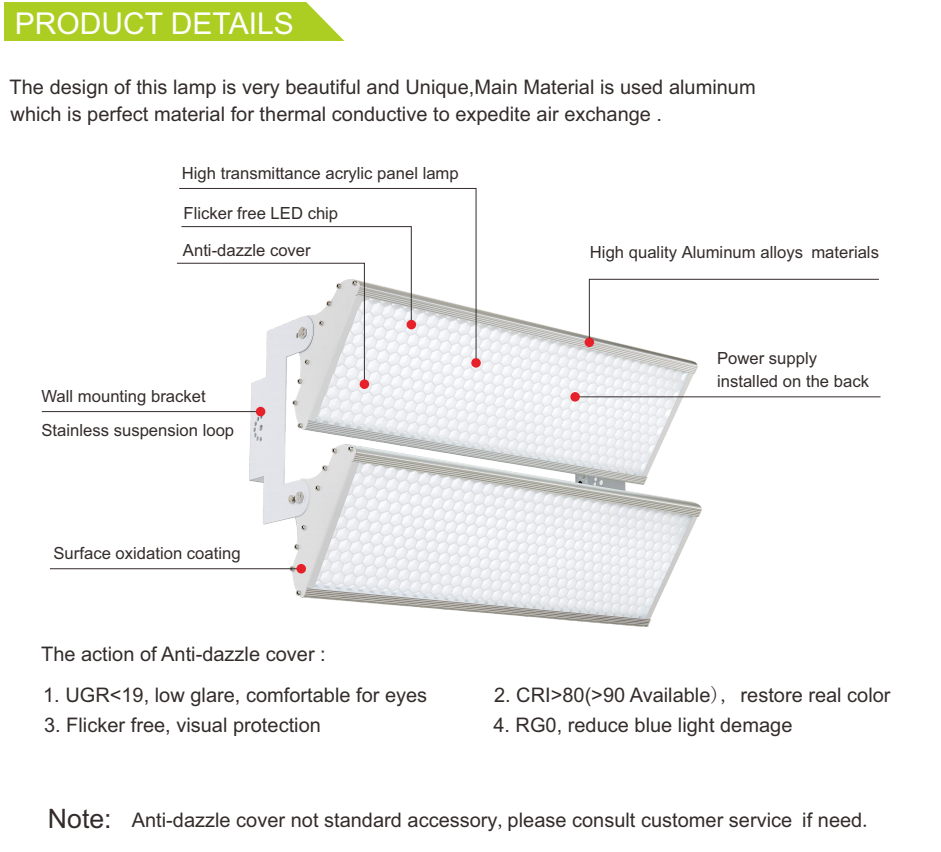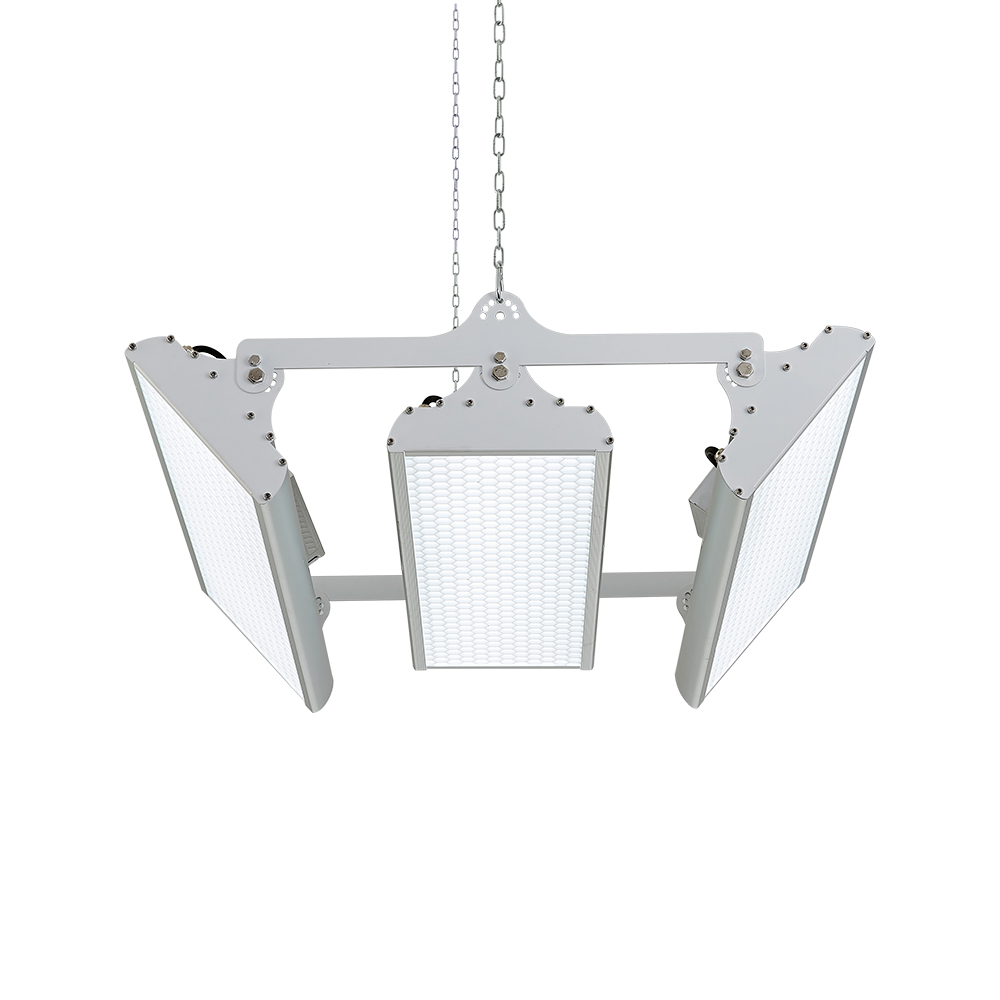LED INDOOR STADIUM LIGHT

Benefits
1.Replace conventional Linear Highbay Lights
2.Adopt aerodynamic design, take heat away quickly
3.Fade Resistant Powder Coat Finish
4.Easy Installation ,Hoisted or wall mounted
5 CE ROHS listed
6.Anti-Glare Low UGR
Application
1.Stadium Lighting
2.Industrial workshop lighting
3.Warehouse Lighting.
4.Parking areas lighting.
5.Airport Lighting.
6.Office lighting.
7.Parking areas lighting
Features
1.Beam angle: 90 degrees.
2.Aluminum die-casting heat sinks is good for heat dissipation.
3.lt’s major to replace the conventiona linear highbay light.
4. Green, energy saving, long and reliable life of 50,000 hours.
5. No RF interference, No IR/UV radiation ,no mercury pollution.
6.Wide colour availability in degrees Kelvin(K),2700-6700K.
7.Streamline exterior design, beautiful appearance8.Environment friendly ,energy saving (70~80%).9.Special circuit design, each LED work separately,avoiding the single broken LED influence problem.10. A variety of installation methods, it can be meet the installationof different places.

Tips for Buying Indoor stadium flood lights
The modern sports stadium requires clear, bright lighting. Not only does proper lighting improve player and spectator experiences, but it’s also critical to high-definition broadcasting. When upgrading your stadium floodlights or choosing lighting for a new stadium, you have several considerations. Here is a guide to help you select the lights that will do the job well for many years.
1. Consider Lighting Distribution
Before buying LED floodlights for your stadium, consider your lighting distribution needs. You will want a light with a large beam angle to shine over much of the field. However, if you have many light poles, too wide of a beam angle will lead to wasted light and energy. Carefully measure your distribution need and work with a lighting provider who can help you choose a lamp with an angle that will fit.
2. Consider the Longevity of the Light
Next, consider how long the lights you choose are expected to last. Changing stadium flood lights is a tedious job that takes a tremendous amount of time. Thankfully, LED lighting technology means you can have lighting that lasts substantially longer than other lighting options. However, even among LED lighting companies, you will see a significant variance in these products’ expected lifespan. Choose one with a long lifespan to reduce the time and energy you spend replacing stadium lights.
Thermal management is one design element that can directly impact the light’s lifespan. LED lighting generates a significant amount of heat, which affects the light’s longevity. Look for a lighting option to manage heat and protect the light from heat damage. TM21 and ISTMT testing shows a luminaire’s temperate, and you can use this information to choose one with heat protection technology.
3. Consider Color Rendering and Glare
Another factor to consider when considering lighting for your stadium is how colors are rendered and how glare impacts the overall function of the lights. In sporting events, colors must be clearly shown for players to perform at their best and for spectators to enjoy the viewing experience. Glare reduction is vital to the players’ safety and the spectators’ enjoyment. Glare is also an issue concerning light pollution because the more glare a light produces, the more light pollution it has in the neighboring communities.
To measure color rendering, look at the lighting’s Color Rendering Index (CRI). The higher the CRI, the more true-to-life the colors will be. For glare, look for a light with a low UGR. A rating of under 25 is ideal because it creates the same glare as a soft indoor light. Most people will not notice this type of glare, providing a positive experience for everyone.
4. Consider Response Time
Waiting for the lighting to warm up after you turn it on wastes energy and limits your enjoyment of the stadium. Choose LED lighting that has an instant response time. Most luminaires and spotlights do, but always check response time before buying a light to ensure it will be able to respond quickly when you flip the switch on.
5. Consider Dust and Impact Resistance
Finally, make sure the light you choose is resistant to damage from both dust and impact. Though stadium lights are usually out of the line of fire for most sporting events, insects, birds, and debris from other sources, like storms, can all reach the light and damage it. Dust can also be a severe issue for outdoor lighting. Once the light is damaged, you have no choice but to replace it, and that maintenance task is cumbersome. Choose a luminaire for your floodlights that resists damage from these common problems.

